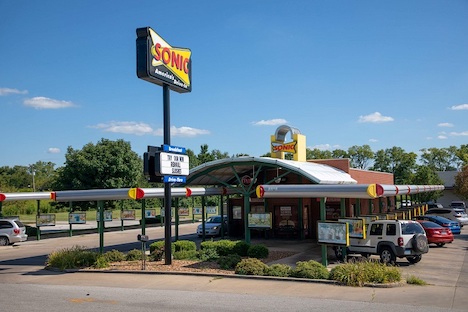There are a tremendous number of complexities to erecting the buildings that make up our skylines. Whether a property is a new build or a redevelopment, the team moving development forward—owners, project managers, general contractors and subcontractors—must all collaborate to ensure smooth delivery and activation of the space without delay.
While day-one tasks and challenges such as site selection, construction and delivery are crucial to the success of a project, the question of how a completed space will function in practice is often overlooked during the design and construction phase – to disastrous results.
These “day-two” issues, or problems that arise after construction has completed and building operations have commenced, are not exclusive to any one sector. Whether a building is a healthcare facility, a hotel or a multifamily property, securing stable occupancy and creating a functional space for the end user is essential to driving profitability and achieving investment goals.
Unfortunately, errors during design and construction that are not contemplative of operational functions can impede these stabilization efforts, requiring costly and time-consuming changes that, until sorted, can significantly impact revenue, daily operations and customer experience.
As day-two pitfalls can affect any asset class, developers and project managers must address potential operational challenges early in the planning and construction phases to mitigate potential issues. Here are five steps for establishing an early foundation for a successful day-two.
Construction and operations planning should be integrated from the beginning of construction. Combining day-one and day-two plans into one master roadmap will ensure that the project’s goals are aligned, and that any decisions made will support the building’s functional operations. Integrating these two strategies requires bringing consultants, including architects, engineers, construction managers, property managers and multi-disciplinary end user groups, together as early as possible.
To begin with, leaders for overall day-one and day-two work should be identified, and those people must align day-one and day-two schedules to increase accountability and transparency and create a cohesive budget that allows for the flexibility needed to address operational needs during the construction phase.
One way to create a unified schedule is pull planning. Rather than starting with the first task and working up toward the end goal, a pull planning strategy works in reverse. The project team will identify the opening date and the final task that needs to be done before the doors can open, then work backward to create a task list. Pull planning reveals overlaps in the schedule, helping to ensure each milestone is completed by the opening date.
The day-two goals should also be visible and transparent up front. For example, a healthcare facility may have the goal of 72% occupancy six months after opening, or three exam room visits per hour after four months. Knowing this information upfront and building a process with milestones and check-ins allows the team to more easily adjust elements to keep on schedule and ensure these goals are met. Methodology for how the information is going to be acquired and analyzed should be agreed to and implemented.
Establish an Owner Change Committee
An owner change committee is a group of key project stakeholders that can communicate and discuss necessary changes throughout the duration of a project. No matter the project, it’s inevitable that changes are going to happen, so it is imperative that there is an established process to deal with them as they arise.
An owner change committee can vet prospective modifications based on the necessity of the alteration and how it will impact the project, then provide a framework to effectively implement changes with minimal impact to the overall timeline and budget. In a healthcare property, an owner change committee is a multidisciplinary team, one that is involved beginning in the schematic design process to help provide direction from day one. The same team should remain involved from construction to activation.
The change committee can include everyone from development and construction stakeholders to the doctors that will work in the physical space, who can speak to operational efficiency. Additionally, everyone on the change committee should have visibility into both the upfront and long-term operational costs, which will help to avoid situations in which decisions are made based on “first” cost estimates, without building longer-term operational expenses into the timeline and project structure.
Create Milestone Check-Ins
While establishing a proper plan and a change committee is important, the process must continue to evolve alongside the project. Creating a schedule that includes regular check-ins with project stakeholders and end-users alike helps ensure that both construction and operational goals remain aligned as the project progresses, and that any potential challenges are dealt with as soon as possible.
The design and construction project team rarely has deep insight into how the end users are going to run the building. If set up properly, these meetings can validate design, confirm operational models and jumpstart the creation of building activation and stable occupancy models. As it can be especially costly and time consuming to address updates and changes after the end-user has moved in, scheduling milestone meetings from the jump will allow stakeholders and owners to assess issues and reach targeted income-generation earlier.
Working Around Day-Two Updates
In an ideal world, once the end-users move into a building, the job of a project team would be done. Unfortunately, we live in the real world, and while regular check-ins with end users and the owner change committee can help to mitigate day-two problems, there are often situations in which a building needs to be operational before it’s finished. In these instances, it’s essential that the property can still generate income while these final kinks are worked out.
On a multifamily property, for example, this could mean opening the doors before common areas are complete, which will let ownership begin leasing efforts while completing construction of ancillary spaces. It is essential to anticipate potential day-two disruptions and build those into the schedule, budget and project roadmap from the beginning to ensure building safety and the customer experience are not compromised.
Keep End User Experience Top of Mind
The biggest threat of a day-two challenge is that it hampers the overall experience of the property, which could derail leasing efforts in a multifamily property, hinder productivity and patient health in a medical setting, and delay stabilization across all property types.
While the building may still have a punch list on opening day, the feel and experience of the property should be true to the tenant’s brand. To ensure a cohesive experience on opening day, prioritize the essential elements of the property that will create a familiar branded environment for guests, patients, users or doctors and staff, whether that is a welcoming lobby and amenities in a hotel, completed and operational units in a multifamily property, or a clean and well-equipped medical facility.
Day-two challenges can dramatically impact a development project. By taking a few proactive steps, engaging the right team members and understanding what aspects of the project to prioritize, project owners can reduce or eliminate day-two problems and achieve stabilization earlier.
Eric Hoffman is Vice President & Healthcare Sector Lead at Chicago’s Project Management Advisors.









